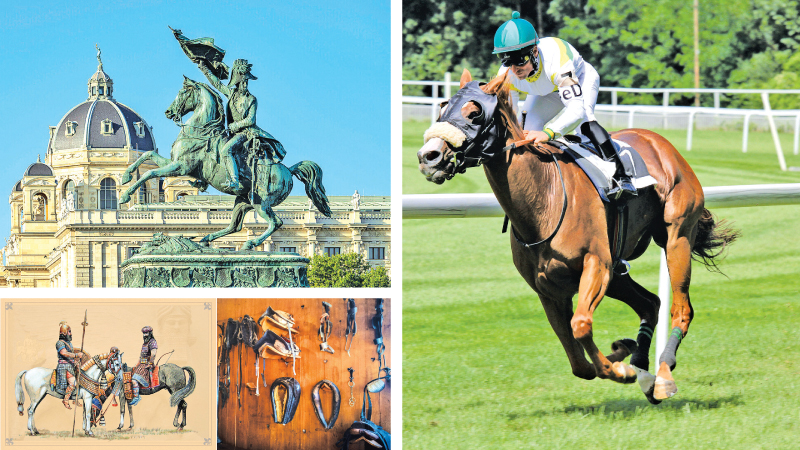 Equestrianism, also known simply as horseback riding, is a rich tradition practised by cultures around the world throughout human history, and represents the evolving relationship between humans and horses. Spanning thousands of years since the domestication of horses, equestrianism has evolved from a means of transport and warfare into a sophisticated discipline which may involve anything from recreational riding and competitive sports, to even therapeutic practices.
Equestrianism, also known simply as horseback riding, is a rich tradition practised by cultures around the world throughout human history, and represents the evolving relationship between humans and horses. Spanning thousands of years since the domestication of horses, equestrianism has evolved from a means of transport and warfare into a sophisticated discipline which may involve anything from recreational riding and competitive sports, to even therapeutic practices.
The relationship between humans and horses is so ancient that it is not clear when exactly horses were domesticated, but it is theorised to be at least 4,000 years, with some records going as far back as 5,000 years ago. Initially horses were thought to have been domesticated for food, agriculture and transportation purposes, with evidence showing they were used to draw chariots very early on. With the invention of harnesses, bits, and saddles, horses began to be used with drastically improved speed and efficiency, and then used in warfare not long after.
Chariot warfare
By around 2000 BCE, chariot warfare had emerged in Mesopotamia and Egypt, giving armies a massive tactical advantage. The effectiveness of horse riding in warfare resulted in many technological advances in equestrianism that are used to this day, such as the invention of stirrups, advanced saddles, and horse collars. Stirrups allowed for mounted cavalry units to replace chariots, and soon after, horses would become heavily relied upon by empires such as the Persians, Greeks, Romans, and later the Mongols. The Mongol Empire, under Genghis Khan, was infamous for their skilled horsemanship and their strategic use of horses led to rapid conquest and dominance across vast territories.
 During the Renaissance, equestrianism began to shift from a battlefield necessity to a more refined art form. Riding academies were established in Europe, particularly in Italy and France, where noblemen were taught dressage, a discipline that focused on controlled, elegant movements. These traditions were further formalized in the 16th and 17th centuries, influencing the development of classical riding and the creation of institutions such as the Spanish Riding School in Vienna, which still exists today.
During the Renaissance, equestrianism began to shift from a battlefield necessity to a more refined art form. Riding academies were established in Europe, particularly in Italy and France, where noblemen were taught dressage, a discipline that focused on controlled, elegant movements. These traditions were further formalized in the 16th and 17th centuries, influencing the development of classical riding and the creation of institutions such as the Spanish Riding School in Vienna, which still exists today.
By the 19th century, with the rise of mechanization, horses were all but completely phased out of use in warfare and transportation. But, equestrianism would find a new life in sport and recreation. Horse racing, show jumping, fox hunting, and polo gained popularity, particularly among the upper classes in Europe and America. In 1900, equestrian sports debuted at the Olympic Games and have become a permanent fixture, showing off disciplines such as dressage, eventing, and show jumping. Uniquely, equestrian events are among the few Olympic sports where men and women compete directly against each other.
Horse racing
Another major aspect of equestrianism is horse racing. Though racing horses existed for as long horses were domesticated, modern horse racing as we know it today only began to take shape around the 17th and 19th centuries, when the British aristocracy began to breed horses, producing faster, stronger animals, for the specific purpose of racing.
This practice of thoroughbred horse racing would quickly become a favourite pastime of the British aristocracy, earning it the moniker ‘Sport of Kings’, and formal racecourses were established across the country.
Horse racing expanded globally during the colonial period, with British colonists bringing the sport to places such as India, Australia, and the Caribbean. Today, horse racing is a global industry, with major events like the Grand National, Melbourne Cup, Dubai World Cup, and Royal Ascot attracting millions in bets annually.









